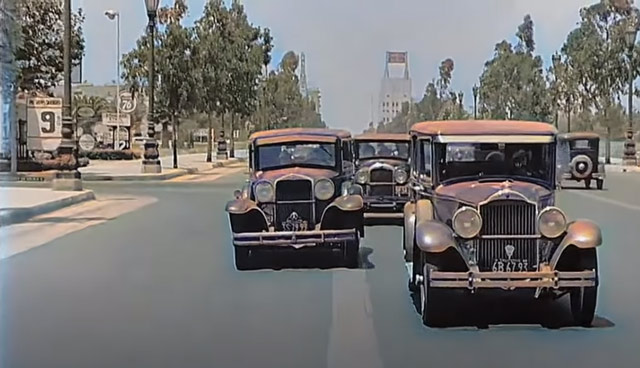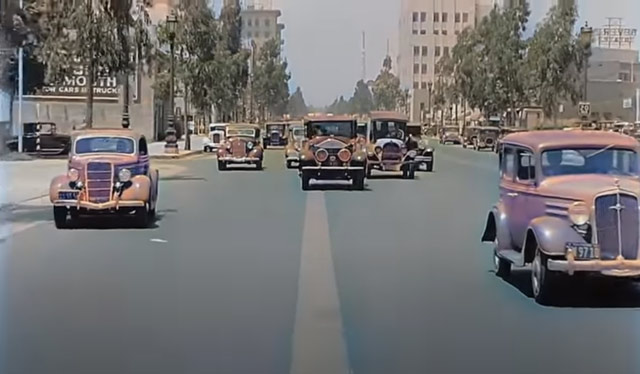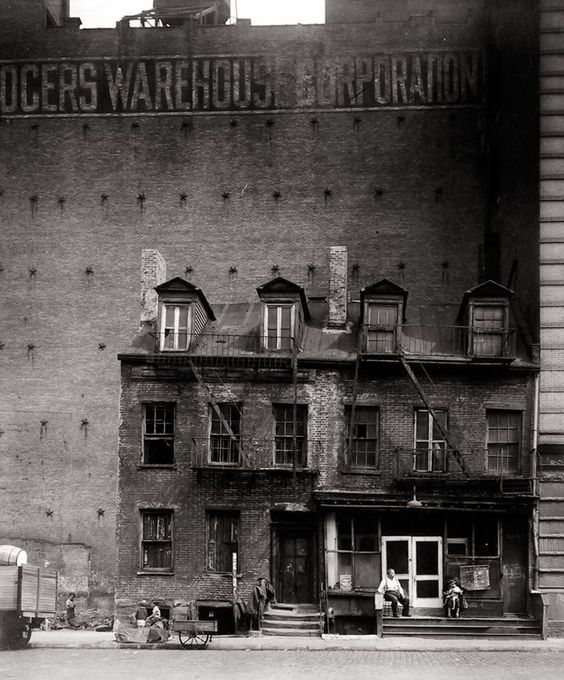Tinseltown in the Thirties
 |
| Beverly Hills in the 1930s. Do you recognize that vehicle? It's a Rolls Royce. My guess is that it was a 1935 Rolls Royce Phantom II Limousine Hooper Coach. At least one has survived until today in perfect condition, maybe that exact one. That was owned by somebody. |
So they loaded up the truck and they moved to Beverly... Hills, that is. Swimming pools, movie stars.
Let's take a cruise down Wilshire Boulevard in 1935 (film at bottom of the article).
In the year 1935, there was a global Depression that had begun with the stock market crash of 1929. It lasted until 1939 and wasn't truly through until after World War II. People lived in shacks in Central Park and sold apples on street corners to make a few pennies. However, the Great Depression's effects were not evenly felt everywhere. There was a pocket of wealth was in California, specifically, in a town called Hollywood. The 1930s were a great decade for the film industry. Money flowed from across the country and world to the West Coast as people crowded into movie palaces to escape their dismal plights. This created enduring stars like Clark Gable, Ginger Rogers, Humphrey Bogart, Barbara Stanwyck, James Cagney, and Carole Lombard. It also created this film.
 |
| If you look over to the extreme left, you will see that gasoline was nine cents a gallon. Even with inflation, that would make it only about $1.80 in today's money. |
All of that wealth is apparent in this beautifully restored footage of a drive down Wilshire Boulevard ca. June 1935. The usual restoration tricks have been applied to make the old black-and-white original footage more palatable to the modern eye. The sharp-eyed will spot many telling details throughout this footage which likely was considered exceedingly mundane and fit only for rear-projection purposes at the time it was filmed.
 |
| On the left is a tow truck pulling an unfortunate accident victim. Yes, they most definitely did have traffic accidents back in the day, perhaps aided by the fact that there were no traffic lanes. |
Needless to say, Wilshire Boulevard looks nothing like this today. For one thing, then there were no lane markings on the roads. Drivers just went where they wanted and were expected to stay on their side of the road. You would be driving quite properly if you simply straddle the line running down the road. Not quite an honor system, but far from today's highly regimented traffic rules.
 |
| If you wanted a cheap room on Wilshire Boulevard, you could get a "beautiful single apartment" for $30 per month. Even in today's money of about $600 that would be cheap. |
There are many little vignettes in these types of films. You pass a car lot full of the latest Packard sedans, a woman dressed all in white including a bonnet, empty fields - all quite normal in 1935 Los Angeles.
 |
| The Warner Bros. Beverly Hills Theater had ample parking right next to the entrance if you wanted to catch the matinee. Today it is "Oil for the Lamps of China," starring Pat O'Brien, which was released on 8 June 1935. Doesn't look too popular today, though. Well, times are tough, it's 1935, you know and money is tight. |
Even people who are very familiar with Wilshire Boulevard will have a difficult time placing most of these locations. The entire area has changed radically over time, particularly during the years immediately after World War II. Jack Warner opened the Beverly Hills Theater in 1931.
 |
| Jack Warner's Beverly Hills Theater ca. 1935, directly ahead at the end of the road. |
The Beverly Hills Theater lasted until 1975, after which it was purchased by a bank and then demolished. Perhaps the most striking thing that you don't see in this 1935 film are homeless people, tents, or panhandlers. You would have seen them all across the country in 1935 and in 2020s Los Angeles, but not on this drive down 1935 Wilshire Boulevard.
 |
| Just drive on the lines, it's okay in 1935! |
Anyway, I hope you are like me and enjoy these old films and restorations. It's a window into another time and place that came and went and will never be repeated. Whether that's good or bad is your decision, but it's always fun to take a peek into the past and see where we came from.
If you like this excursion, please consider taking a few more from the following selection:































